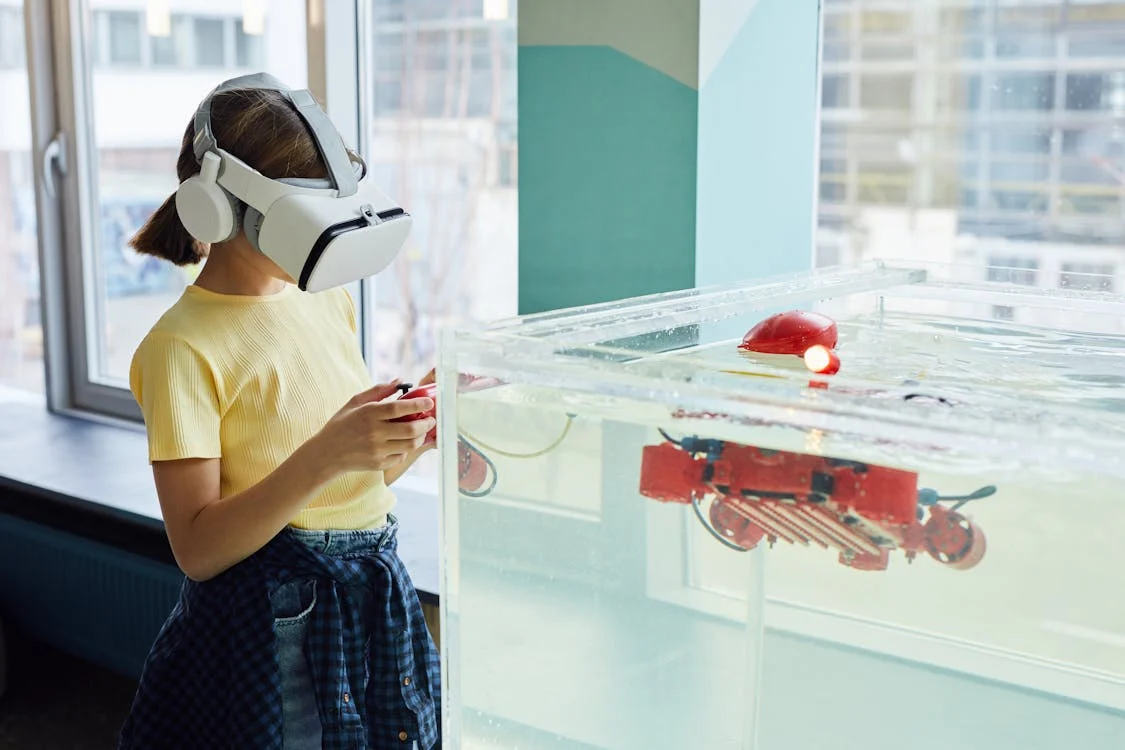The integration of Augmented Reality (AR) and Virtual Reality (VR) is revolutionizing how we interact with digital content and the physical world. AR overlays digital information onto the real world, enhancing our perception of reality, while VR immerses users in a completely virtual environment. Together, these technologies create a powerful toolset for transforming various industries, from gaming and entertainment to healthcare and education.

The Rise of AR and VR Technologies
Trends in AR and VR
AR and VR technologies have seen significant advancements over the past decade. The proliferation of smartphones and wearable devices has made AR more accessible, while VR headsets have become more affordable and sophisticated. Companies like Apple, Google, and Facebook are heavily investing in these technologies, indicating their potential for widespread adoption.
Key Applications of AR and VR
- Gaming and Entertainment: AR and VR are creating immersive gaming experiences that were previously unimaginable. Games like Pokémon Go and VR platforms like Oculus Rift have set new standards for interactive entertainment.
- Healthcare: Medical professionals use VR for surgical training, while AR assists in diagnostics and minimally invasive surgeries.
- Education: AR and VR provide interactive and engaging learning experiences, helping students understand complex concepts through visualization and simulation.
- Retail: Virtual fitting rooms and AR-based product visualization are transforming the shopping experience, allowing customers to try before they buy.
Benefits of AR and VR Integration
Enhanced User Engagement
AR and VR technologies significantly boost user engagement by providing immersive and interactive experiences. In gaming, users feel a part of the virtual world, while in education, students can interact with 3D models of historical artifacts or scientific phenomena.
Improved Training and Simulation
In industries like healthcare and aviation, AR and VR offer safe and effective training environments. Surgeons can practice complex procedures in a risk-free virtual environment, and pilots can train using VR flight simulators.
Innovative Marketing and Sales
Businesses leverage AR and VR to create innovative marketing campaigns. For instance, automotive companies use VR to give potential customers virtual test drives, while real estate agents offer virtual tours of properties.
Accessibility and Inclusivity
AR and VR make experiences more accessible for people with disabilities. VR can simulate environments for those who cannot experience them physically, and AR can assist individuals with visual or hearing impairments by providing contextual information in real-time.
Challenges in AR and VR Integration
Technical Limitations
Despite their potential, AR and VR technologies face several technical challenges. High-quality VR requires significant computing power and advanced hardware, which can be expensive. AR, on the other hand, needs precise location tracking and high-resolution displays to be effective.
Content Creation
Creating engaging and high-quality AR and VR content is resource-intensive. It requires specialized skills and tools, which can be a barrier for smaller businesses and developers.
User Adoption
While AR and VR are growing in popularity, there is still a learning curve associated with these technologies. Some users may find VR headsets cumbersome or experience motion sickness, which can hinder widespread adoption.
Future of AR and VR Integration
Advancements in Technology
The future of AR and VR looks promising with continuous advancements in hardware and software. Improvements in AI and machine learning will enable more sophisticated and responsive AR experiences. Meanwhile, developments in VR will focus on creating more realistic and immersive environments.
Broader Applications
As AR and VR technologies evolve, their applications will expand beyond entertainment and gaming. We can expect to see more integration in sectors like tourism, where virtual tours can enhance travel experiences, and manufacturing, where AR can assist in complex assembly processes.
Increased Collaboration
AR and VR will play a crucial role in remote collaboration, allowing teams to work together in a virtual space regardless of their physical location. This will be particularly beneficial in a post-pandemic world, where remote work and virtual meetings are becoming the norm.
Conclusion
The integration of AR and VR is set to transform how we interact with both the digital and physical worlds. With their ability to create immersive, interactive, and engaging experiences, these technologies have the potential to revolutionize various industries. While there are challenges to overcome, the future of AR and VR is bright, with endless possibilities for innovation and growth.
FAQs
What is the difference between AR and VR?
AR (Augmented Reality) overlays digital content onto the real world, enhancing the user’s perception of reality. VR (Virtual Reality), on the other hand, immerses the user in a completely virtual environment, disconnecting them from the real world.
How are AR and VR used in education?
AR and VR are used to create interactive and immersive learning experiences. For example, students can explore historical sites through VR or learn about anatomy by interacting with 3D models using AR.
What are the main challenges of AR and VR integration?
The main challenges include technical limitations, high costs of hardware, resource-intensive content creation, and user adoption issues such as motion sickness and the learning curve associated with using these technologies.
Can AR and VR be used together?
Yes, AR and VR can be used together to create mixed reality experiences. For example, a user might interact with virtual objects in a real-world setting, enhancing the immersion and interactivity of the experience.
What is the future of AR and VR?
The future of AR and VR includes advancements in technology, broader applications across various industries, and increased use in remote collaboration. These technologies are expected to become more accessible and integrated into everyday life, transforming how we work, learn, and play.